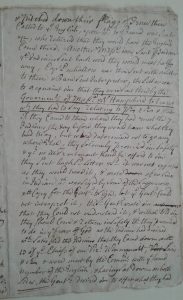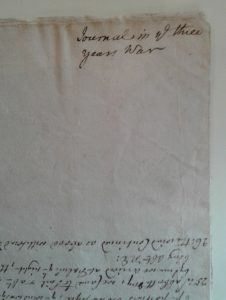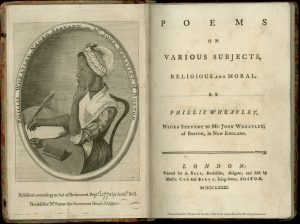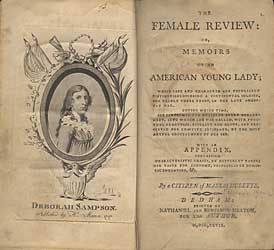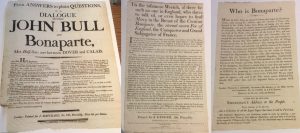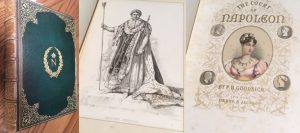By Judith Maas, Library Assistant
December 22, 1873
This morning we took the early train at Alexandria that we might get to a fine view of the Pyramids by daylight. We are to see them before reaching Cairo. The way is charming. Palm trees, camels, laborers in flowing robes, buffaloes ploughing and sometimes yoked with a camel; and all cultivated ground [1].
So begins Sarah Freeman Clarke’s account of an Egyptian journey, during which she traveled by foot, train, boat, and donkey and explored pyramids, bazaars, tombs, and temples. Her sensitivity throughout the diary to color, light, and form and her receptiveness toward all she encountered reflect her vocation as an artist. Whenever she had the opportunity on the trip, she sketched people and landscapes. If lack of time prevented her from making a drawing, she would describe in her diary an image that she wished she could have captured in her sketchbook. The journal, entitled “Notes of a Nile Voyage,” is now part of the Perry-Clarke collection at the MHS.
At about 2 o’clock V. shouted “Pyramid” and we all looked…and as it seemed on the edge of the horizon were two faint spectral images, which would have been taken for mountains but for their symmetrical form. This is the most imposing view that one gets of these structures….when you are quite close they lose all their dignity and become ugly masses of broken and ill put together stonework [2].
Amidst many family responsibilities, Clarke (1808-1896) led an adventurous life, filled with learning and eclectic accomplishment. Born in Dorchester, she came of age during the intellectual and artistic ferment of antebellum Boston. Her first teacher was her paternal step-grandfather, Dr. James Freeman (1759-1835), minister of King’s Chapel in Boston. Under his guidance, Sarah and her brothers studied mathematics and ancient languages and literature. As her brother James recalled in his autobiography, Dr. Freeman’s aim as a teacher was to elicit his pupils’ interest in a subject rather than to pursue “mental discipline”[1] as an end in itself; study became a form of exploration for the children rather than a chore.
Now it is four o’clock, and when the lights are becoming most beautiful on these venerable objects, we must go for the days are short…. as we looked back to the pyramids they lost their… sordid aspect which they wear when you are too near to them and grow fairer and fairer at every step of distance gained [7].
Upon the death of her father in 1830, Clarke and her mother made ends meet by opening a boardinghouse in Boston. As her brothers left the city to pursue new ventures, Clarke began to extend her interests, taking advantage of city life. She gave art lessons to boardinghouse guests, attended lyceum lectures, and engaged in local philanthropic activities. The boardinghouse itself served as a makeshift school for Clarke, as it grew into a gathering place for budding educators, philosophers, and reformers. Among the visitors were her brother James, now a Harvard divinity student, and his friend and confidante Margaret Fuller, with whom he shared a devotion to German romantic literature.
During the 1830s and 1840s, Clarke became a student of the Romantic artist Washington Allston and formed friendships with Fuller, Ralph Waldo Emerson, and the Peabody sisters. Emerson described her as “a true & high-minded person,” but noted that she “has her full proportion of our native frost.”[2] Her reserve, perhaps, was a hidden strength, allowing her to listen and learn as much as she could from these friends and teachers. Emerson’s precept, to “satisfy the wants of your own soul…[despite] the prejudices of society,”[3] she said, had helped inspire her to pursue her art. “His discourses,” to her, were like “diamonds.”[4]
After lunch drove to the tombs of the Caliphs….The first we entered was an old mosque attached to a Sultan’s tomb. It was a lovely place, open to the sky, with white doves flying about the minarets, which rose, carved and beautiful, above the … upper edges of the walls of the inner court…. Another day when we return to Cairo I must come and paint a bit of the mosque and sky….The other tombs scattered around were beautiful. One had … a good view of the desert and the numerous domes, some in light and some in shadow made a charming picture with their pearly tints [21].
Clarke is worth getting to know not only for the distinguished company she kept, but as someone who found her own distinct path: as a landscape artist who exhibited her paintings at the Boston Athenaeum and whose drawings illustrated Fuller’s first book, Summer on the Lakes; as a participant in Fuller’s “Conversations” for women; as a teacher at Bronson Alcott’s Temple School; as a student of Dante, contributing a poem on the poet to first issue of the Dial and two studies to the Century magazine; and as founder of the Marietta, Georgia, town library.
We crossed the river in our small boat and took the donkeys on the other side … The sunlight coming from behind the … leaves and piercing them with its arrows and the play of color as well as light in this novel combination bewitched me, and I hoped to return and get a sketch of it at the same hour on another day [41].
Clarke was a veteran traveler by the time she made her Egyptian excursion, her interest sparked perhaps by the example of Allston, who had studied art in London, Paris, and Rome, following his graduation from Harvard in 1800. In 1843, after inheriting family money, Clarke, her brother James, and Fuller embarked on a western tour that covered Niagara Falls and the Great Lakes Region. The journey brought the travelers up close to places, people, and ways of life far removed from their everyday lives in Boston: native American encampments, wide open prairie, remote settlers’ cabins. As she would on all her later excursions, Clarke recorded her impressions in her sketchbook, much to Fuller’s delight. In a letter dated September 1843, Fuller wrote: “Sarah Clarke has made many sketches from the magnificent and lovely scenes we have visited. She has, in this way, quite a good journal of our summer.”[5]
Every part of this…temple, inside walls and outside, all over the pillars, pilasters,…and in every possible spot are sculptures. They are the history of the time—its newspapers, its records, its libraries, and its schools, for no doubt teachers brought here their pupils to be instructed in history [50].
In 1844, Clarke made the first of several trips to Italy, where she absorbed the landscape and art and drew outdoors. By the mid-nineteenth century, Italy was becoming a destination of choice for artists; Allston had described Rome as “the great University of Art.”[6] In the late 1860s, after inheriting most of her mother’s estate, she toured northern Italy to sketch the towns and landscapes that Dante would have known.
The ride through this valley is most impressive….It is a valley of stones. Walls of stones hem you in, your road is a bed of stones where once the Nile may or must have flowed….The glare of the sun on all this rock is most unpleasant, but the blue of the sky above, the yellow, red, and black rocks, every line melted by the … sunshine, the flowing outlines which show where the force of the water pressed and molded and rounded the rocks into the masses which we see, all bring before you the mighty force of a great river. It was impossible to stop to sketch in that glare but I would if I could so much was I impressed with the spirit of the place [68].
The Egyptian voyage would be Clarke’s last great expedition. In words and pictures, she had made many worlds her own. In later years, she settled in Marietta, Georgia, to be closer to family. Here she discovered yet another role for herself, that of making her books available to neighbors and family. Her collection became the basis for Marietta’s town library, founded with Clarke’s support, in 1893.
During her final years, Clarke, no longer able to travel, spent time with family and followed the news, taking a special interest in the 1896 presidential election between William McKinley and William Jennings Bryan. A letter she wrote to her sister-in-law suggests that her imagination and curiosity remained undiminished: “How I should have liked to take a flying machine, and fly from city to city, all over the country, to see the great crowds on election day!”[7]
Sources
Capper, Charles, Margaret Fuller: an American Romantic Life, v. 1, the private years. Oxford University Press, 1994.
Clarke, James Freeman, Autobiography, diary and correspondence, edited by Edward Everett Hale, Boston, Houghton Mifflin, 1891.
Emerson, Ralph Waldo. Journals and miscellaneous notebooks, Volume 7, edited by William H. Gilman and others, Harvard University Press, 1960.
Fuller, Margaret. The Letters of Margaret Fuller, Volume I, 1817-38, and Volume III, 1842-44, edited by Robert N. Hudspeth, Cornell University Press, 1983.
Kopp, Joan Alice. Sarah Freeman Clarke, 1808-1896: a woman of the nineteenth century. Marietta, Ga: Cobb Landmarks & Historical Society, 1993.
Marshall, Megan. Margaret Fuller: a new American life. Houghton Mifflin Harcourt, 2013.
Marshall, Megan. The Peabody Sisters: Three Women Who Ignited American Romanticism. Houghton Mifflin Harcourt, 2005.
Myerson, Joel. “A True and High-Minded Person: Transcendentalist Sarah Clarke. Southwest Review, Spring 1974, 163-172.
Stebbins, Theodore E. , Jr. The Lure of Italy: American artists and the Italian experience, 1760-1914. Museum of Fine Arts, Boston, in association with Harry N. Abrams, Inc., Publishers.
[1] Clarke, 17.
[2] Emerson, 395.
[3] Quoted in Capper, 215.
[4] Ibid.
[5] Fuller, vol. III, 147.
[6] Stebbins, 39.
[7] Quoted in Kopp, 95.
